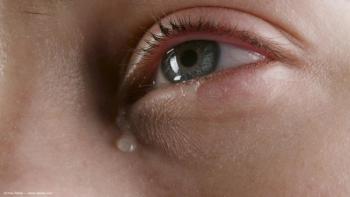
AAO 2025: Understanding and diagnosing endophthalmitis
Sunir J. Garg, MD, explores the nuances of endophthalmitis, distinguishing between infectious and non-infectious responses for effective patient management.
Note: Video captions are generated with the assistance of AI and may contain errors.
At the 2025 annual meeting of the American Academy of Ophthalmology, Sunir J. Garg, MD, gave a presentation titled, "Endophthalmitis Sterile or not." In an interview with Ophthalmology Times, he shared some insights from this presentation.
Garg spoke on endophthalmitis, focusing on terminology, classification, and management of inflammatory eye conditions following medical interventions. He proposes replacing the term "sterile" with "cultured negative endophthalmitis" to provide more precise medical language.
He distinguished 2 primary types of eye inflammation: infectious and non-infectious inflammatory responses. Non-infectious responses typically occur after procedures like anti-VEGF injections, steroid injections, or cataract surgery. Patients usually report symptoms within 1 to 2 days of the procedure, including blurred vision, redness, and pain.
Clinical examination of non-infectious cases often reveals mild anterior and vitreous chamber reactions without significant fibrin formation. These conditions are generally responsive to topical steroid treatments. The key diagnostic challenge lies in differentiating between infectious and non-infectious endophthalmitis. Garg recommends a strategic approach to diagnosis and treatment:
- Start with aggressive topical steroid treatment
- Have the patient return after a few hours
- Observe whether symptoms stabilize or worsen
A critical distinguishing factor is the progression of symptoms. Infectious endophthalmitis caused by virulent organisms will rapidly deteriorate, with symptoms worsening hour-by-hour. In contrast, non-infectious inflammatory responses should remain relatively stable. The recommended management strategy involves:
- Immediate steroid treatment
- Allowing the patient to engage in light activities
- Reassessing the condition within a few hours
- Confirming stability of symptoms before making a definitive diagnosis
This approach helps clinicians effectively manage potential eye inflammation while minimizing risks.
Newsletter
Don’t miss out—get Ophthalmology Times updates on the latest clinical advancements and expert interviews, straight to your inbox.








































